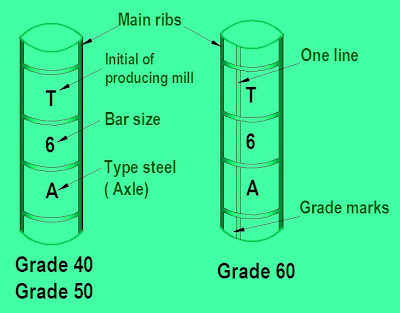For most effective reinforcing action, it is essential that steel and concrete deform together, i.e., that there be a sufficiently strong bond between the two materials so that no relative movements of the steel bars and the surrounding concrete occur. This bond is provided by the relative large chemical adhesion which develops at the steel concrete interface, by the natural roughness of the hot - rolled reinforcing bars and by the closely spaced rib-shaped surface deformations with which reinforcing bars are furnished in order to provide a high degree of interlocking of the two materials.
Additional features related to combined performance of two materials are following:
1) The thermal expansion coefficient of the two materials are
Concrete - 0.0000055
These values are sufficiently close to forestall cracking and other undesirable effects differential thermal deformations.
2) While the corrosion resistance of bare steel is poor, the concrete which surrounds the steel reinforcement provides excellent corrosion problems and corresponding maintenance costs.
3) The fire resistance of unprotected steel is impaired by its high thermal conductivity and by the fact that its strength decreases sizably at high temperatures. Conversely the thermal conductivity of concrete is relatively low. Thus damage caused by even prolonged fire exposure, if any, is generally limited to the outer layer of concrete, and a moderate amount of concrete cover provides sufficient thermal insulation for the embedded reinforcement.


No comments:
Post a Comment